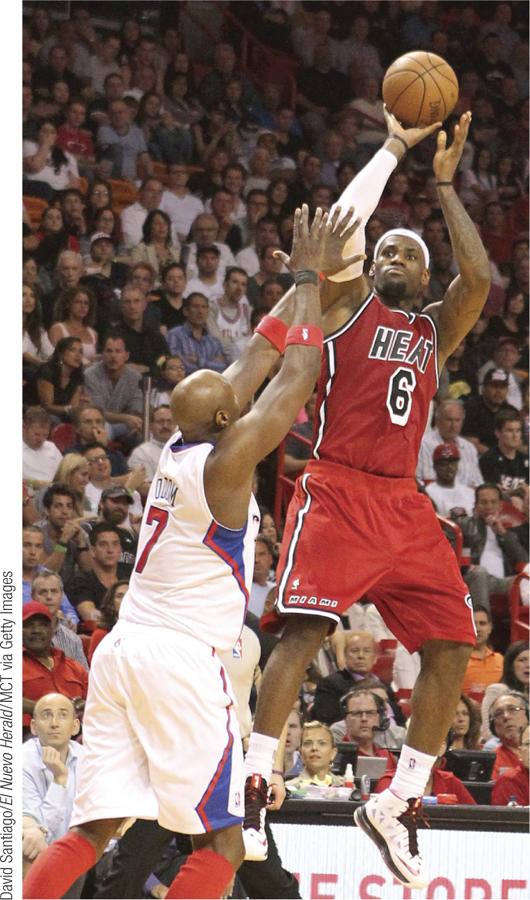Chapter 17
Chi-Square Tests
Nonparametric Statistics
- An Example of a Nonparametric Test
- When to Use Nonparametric Tests
Chi-Square Tests
- Chi-Square Test for Goodness of Fit
- Chi-Square Test for Independence
Beyond Hypothesis Testing
- Cramer’s V, the Effect Size for Chi Square
- Graphing Chi-Square Percentages
- Relative Risk
Next Steps: Adjusted Standardized Residuals
BEFORE YOU GO ON
- You should be able to differentiate between a parametric and a nonparametric hypothesis test (Chapter 7).
- You should know the six steps of hypothesis testing (Chapter 7).
- You should understand the concept of effect size (Chapter 8).
You can’t believe everything you think—or feel. Statistically, the “hot hand” in basketball, the “hot seat” at the poker table, and the “Big Mo” (momentum) in football are not real; however, they feel real because of hindsight bias and confirmation bias (introduced in Chapter 5). With the possible exception of bowling, “feeling it” does not statistically predict that a “hot streak” will continue (Alter & Oppenheimer, 2006; Gilovich, 1991; Kida, 2006). Nevertheless, basketball players and fans have believed that a player’s chance of hitting a shot is greater after a make than a miss (Gilovich, Vallone, & Tversky, 1985). However, shooting records of the Philadelphia 76ers, free-throw records from the Boston Celtics, and a controlled study of 14 men and 12 women from Cornell University’s basketball teams all told the same data story. The Cornell athletes, for example, believed that the outcome of the previous shot influenced the next shot even though they did not perform that way (Gilovich et al., 1985).
The title of an article by Voss, Federmeier, and Paller (2012), The Potato Chip Really Does Look Like Elvis! reminds us that the brain often tricks us into perceiving patterns that don’t exist. Statistical inference can help us see past our own perceptual biases, separate pattern from chance, and decide whether or not what we have perceived is real—even when the data do not have a scale dependent variable. Table 17-1 summarizes the parametric tests we’ve learned. This chapter helps us explore hypotheses about nonparametric data by teaching when to use a nonparametric test and by demonstrating how to use two nonparametric tests based on nominal data. In Chapter 18, we’ll introduce two nonparametric tests used with ordinal data.
Table : TABLE 17-1. A Summary of Research Designs We have encountered several research designs so far, most of which fall in one of two categories. Some designs—those listed in category I—include at least one scale independent variable and a scale dependent variable. Other designs—those listed in category II—include a nominal (or sometimes ordinal) independent variable and a scale dependent variable. Until now, we have not encountered a research design with a nominal independent variable and a nominal dependent variable, or a research design with an ordinal dependent variable.
| I. Scale Independent Variable and Scale Dependent Variable |
II. Nominal Independent Variable and Scale Dependent Variable |
| Correlation |
z test |
| Regression |
All kinds of t tests |
|
All kinds of ANOVAs |
Nonparametric hypothesis tests allow us to distinguish between pattern and chance when observational data do not have a scale dependent variable. For example, Vergin (2000) used a chi-square test, based on the chi-square distribution, to compare winning streaks in Major League Baseball and in the National Basketball Association. In other words, the chi-square distribution lets us test the hot-hand theory by comparing what we actually observe with what we can expect by chance.
We use the chi-square statistic when all of the data are nominal variables. If we can count the frequency of any event and assign each frequency to one (and only one) category, then the chi-square statistic lets us test for the independence of those categories and estimate effect sizes.
